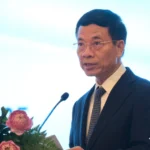Following the publication of an article discussing Vietnam’s medical training system, the topic has attracted significant public attention.
According to Professor Le Ngoc Thanh, Rector of the Hanoi Medical University under Vietnam National University, medical degrees from neighboring countries such as Singapore, Thailand, and Taiwan (China) are internationally recognized, while Vietnamese doctors still face limitations.
Professor Thanh attributes this to Vietnam’s “unique approach.” Singapore follows the British training model, Thailand and Taiwan follow the American model, while Vietnam remains uncertain about its direction and integration path.
He suggests Vietnam should “import” training programs from developed medical systems like France and enhance foreign language training to help doctors communicate, acquire technical skills, and integrate globally.
Many readers have shared their views on this issue. Some argue that Vietnamese doctors are highly skilled despite not following “international standards,” while others believe Vietnam needs reforms to elevate its medical training.
Vietnam has its strengths; quality matters most
Many opinions highlight that Vietnam’s economic, social, and epidemiological context differs from developed countries, leading to differences in training approaches.
One reader commented: “Each country has its own circumstances. Vietnamese doctors primarily serve domestic patients, so competence matters more than international recognition. Many of our doctors are excellent and have even been invited to Singapore for specialized treatments. The current training has been reviewed by professional councils—why worry too much?”
Another reader agreed: “Many foreign students come to Vietnam to study medicine, proving our training programs are of high quality. Surgeries like the separation of the Viet-Duc conjoined twins by Dr. Tran Dong A or successful infertility treatments by Dr. Nguyen Thi Ngoc Phuong are clear evidence.”
A third reader added: “Current medical training in Vietnam meets urgent domestic healthcare needs. As society develops, adjustments can be made to align with international standards later. There’s no need for hasty comparisons.”
Another perspective emphasized: “What Vietnam needs most is not international degree recognition but doctor quality. Most doctors practice domestically, influenced by cultural, physical, and habitual factors. However, the proliferation of medical schools with low entry standards is concerning.”
Lack of international recognition disadvantages doctors
While some prioritize quality, others argue that international-standard training would help doctors advance further.
One reader noted: “Every country has skilled doctors, but why can foreign doctors practice globally while Vietnamese doctors cannot? This is a significant disadvantage.”
Another pointed out: “Medical training in advanced countries takes 10-12 years, including residency salaries. This ensures solid expertise. If Vietnam’s degrees were internationally recognized, it would motivate doctors and validate the domestic training system.”
A reader who worked in France for five years observed: “Training in Vietnam and France isn’t vastly different. The key difference is that in France, after six years, graduates earn a general medical degree and can practice after one additional year. In Vietnam, even with a master’s degree, few doctors pursue further studies. Graduates often need about 10 years of training and practice to reach full competency.”
Improving training and practical experience is crucial
Many opinions stress the need to enhance training quality and hands-on experience for medical students.
One reader shared: “The curriculum matters less than practical training. Currently, students in hospitals lack guidance. Doctors are busy, students are overcrowded, and many leave without meaningful experience. Fundamental changes in practical training are needed.”
Another added: “Entry standards for medical schools vary widely—some require high scores, others very low. Medical training shouldn’t be treated like general education. The number of medical schools should be controlled, retaining only qualified institutions, with better salaries and incentives for doctors in high-demand specialties.”
A real-life example was shared: “A neighbor’s child studied nursing to work in Japan but had to take exams in Malaysia because Vietnam’s qualifications aren’t recognized.”
The diverse opinions show that whether Vietnam chooses international integration or a unique model, the focus must remain on training quality, doctors’ competence, and patient trust.
Improving healthcare quality requires a “comprehensive” approach. How will the medical sector enhance workforce quality in 2025?






